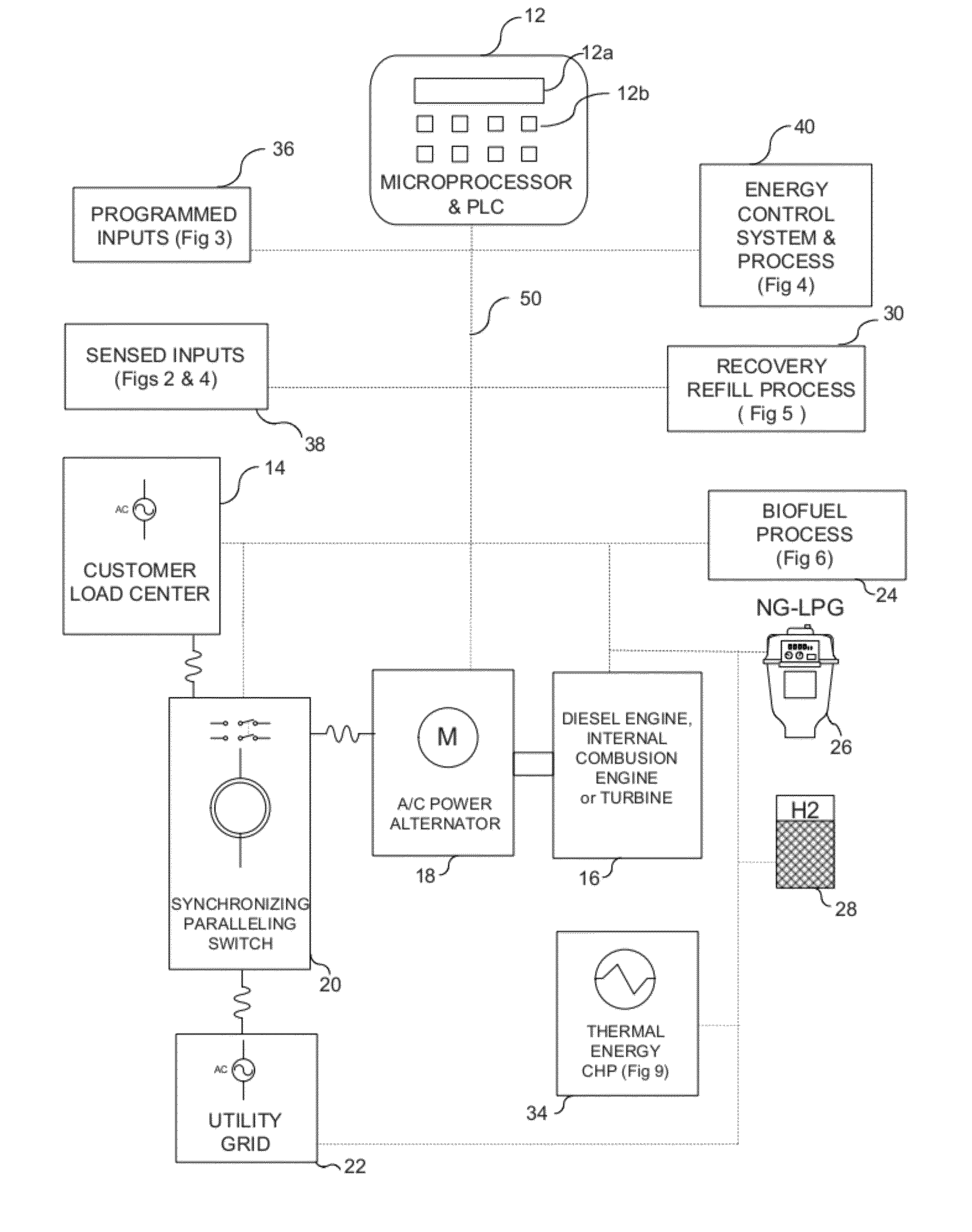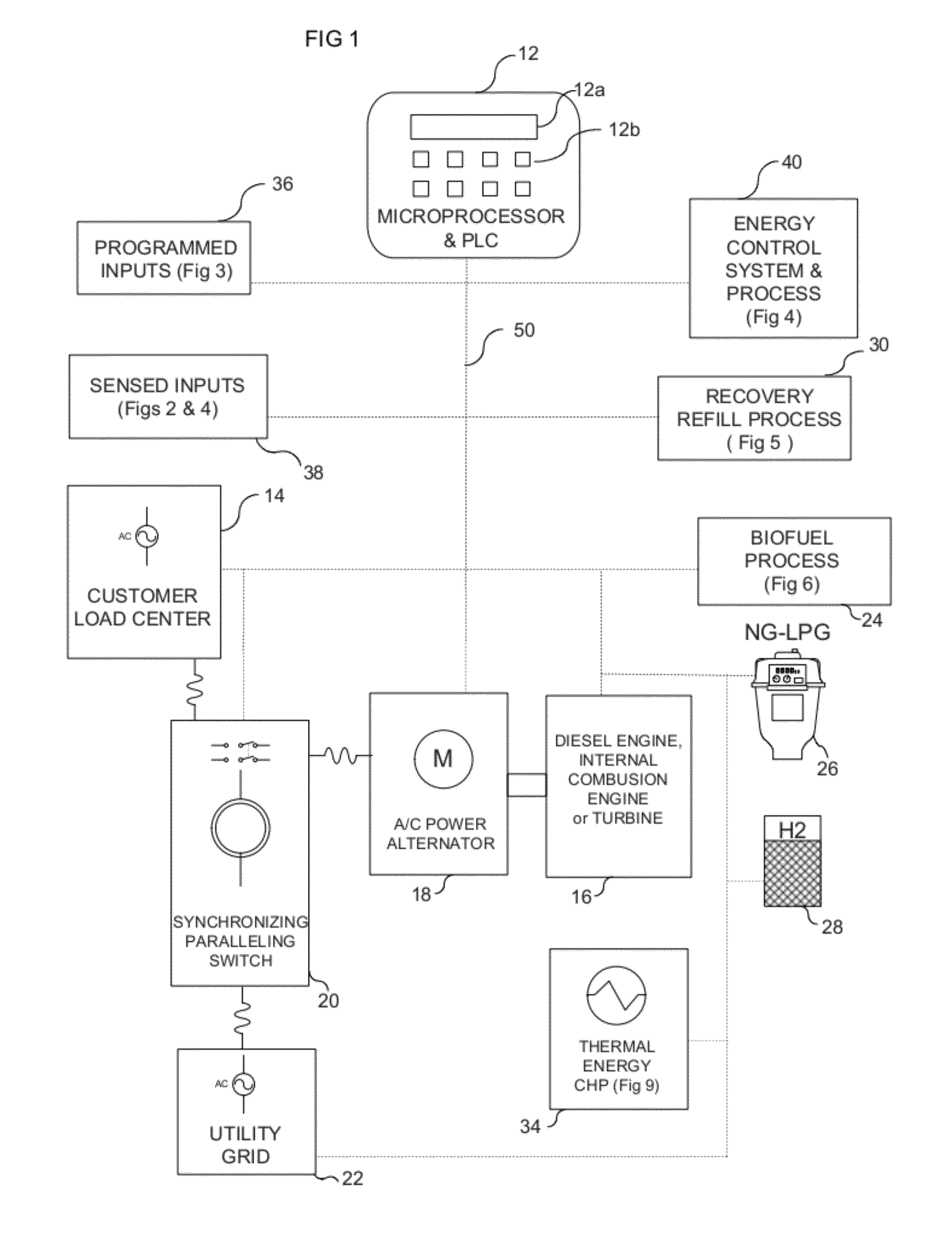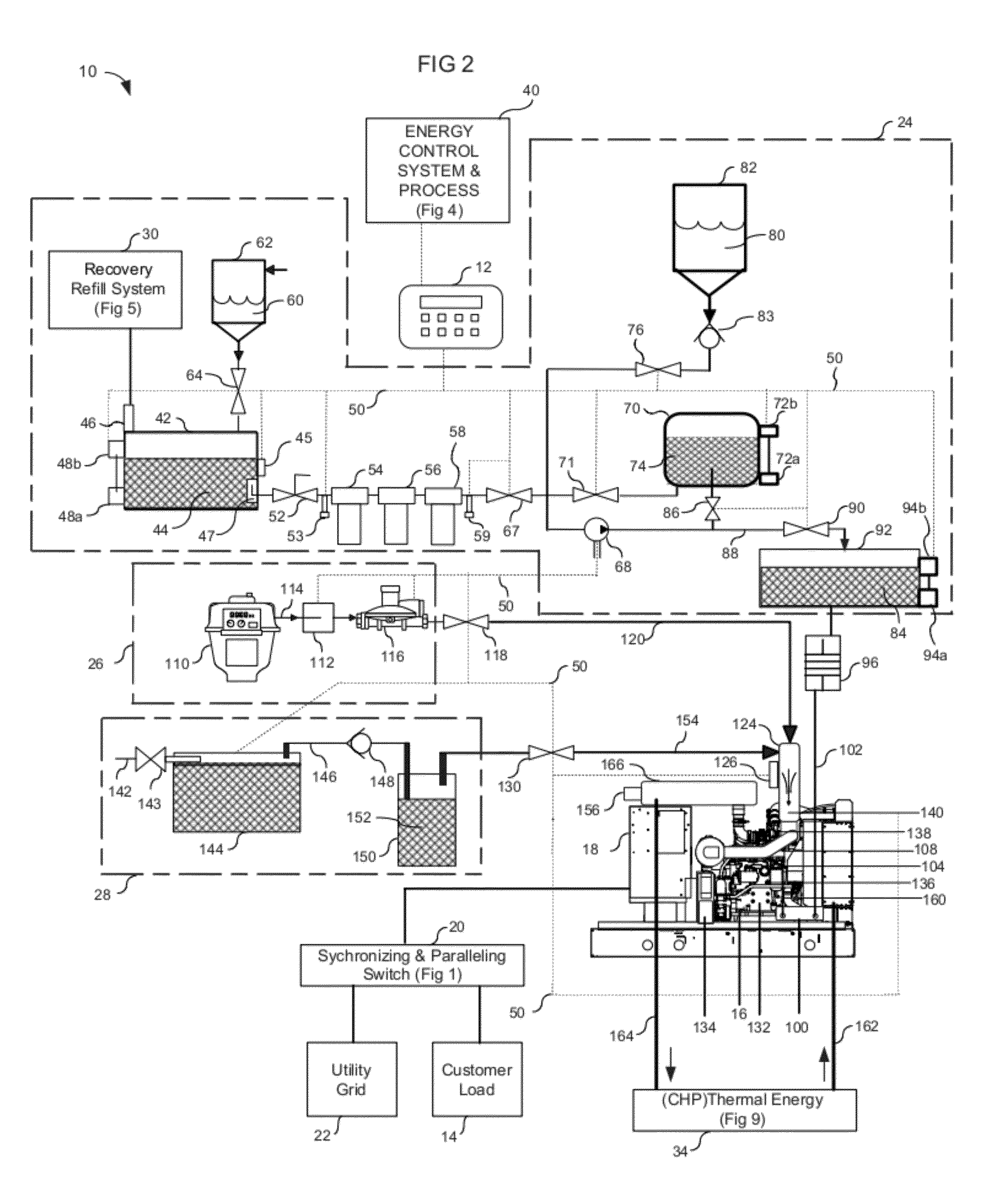Microprocessor controlled automated mixing system, cogeneration system and adaptive/predictive control for use therewith
- Summary
- Abstract
- Description
- Claims
- Application Information
AI Technical Summary
Benefits of technology
Problems solved by technology
Method used
Image
Examples
Embodiment Construction
[0085]Referring now to FIGS. 1-10, an automated microprocessor controlled multi-fuel mixing cogeneration system 10 is shown. In the embodiment being described, the multi-fuel mixing cogeneration system 10 blends hydrogen, bio-fuel, biodiesel / diesel fuel and / or natural gas or propane in a predetermined ratio to provide a highly efficient cogeneration system for efficiently using various fuel sources in a manner that minimizes cost, facilitates reducing emissions of NOx, CO and CO2 emissions, and decreases the dependence on a conventional utility power grid. The bio-fuel mixture may or may not comprise an additive, such as a thinning combustion additive of the type described later herein. In the illustration being described, the cogeneration system 10 and methods described herein provide automated delivery of the various gases and / or fuel, automated blending, monitoring and controlling of the mixtures of such fuels for a fuel to be used by the cogeneration system 10. The system 10 fac...
PUM
 Login to View More
Login to View More Abstract
Description
Claims
Application Information
 Login to View More
Login to View More - R&D
- Intellectual Property
- Life Sciences
- Materials
- Tech Scout
- Unparalleled Data Quality
- Higher Quality Content
- 60% Fewer Hallucinations
Browse by: Latest US Patents, China's latest patents, Technical Efficacy Thesaurus, Application Domain, Technology Topic, Popular Technical Reports.
© 2025 PatSnap. All rights reserved.Legal|Privacy policy|Modern Slavery Act Transparency Statement|Sitemap|About US| Contact US: help@patsnap.com



